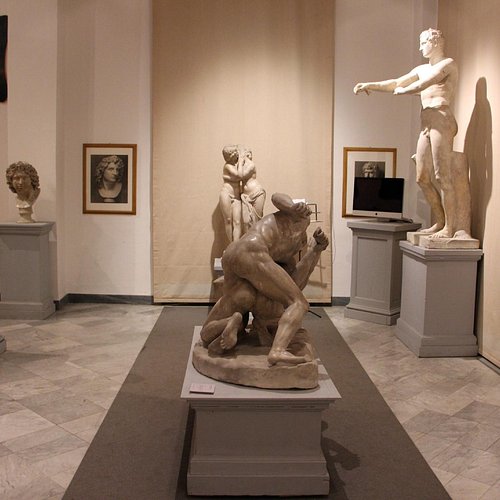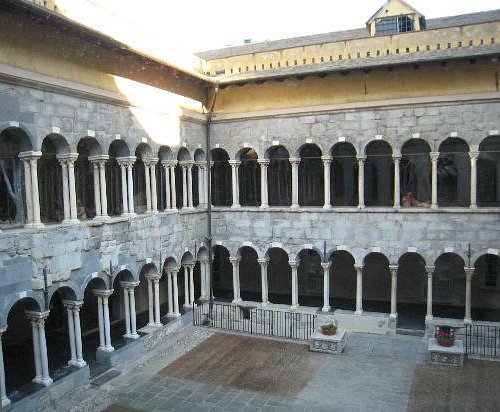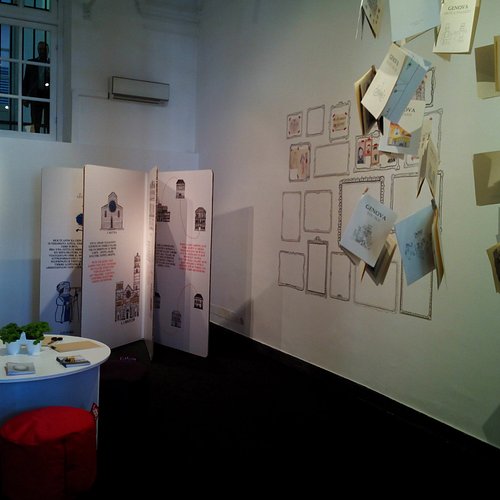What to do and see in Piazza De Ferrari, Liguria: The Best Museums
Wandering the narrow caruggi alleyways of Genoa is a bit like solving a medieval labyrinth. In the heart of the Italian port city lies Piazza de Ferrari, a main square with a beautiful fountain and a perimeter lined with historic buildings, including the Palace of the Doges the Teatro Carlo Felice, which was destroyed during WWII and subsequently rebuilt. The seaside neighborhood of Boccadasse is vision of pink and yellow buildings that brighten up this lovely fishing village.
Restaurants in Genoa
1. Amici dei Musei Genova
2. Archivio Storico del Comune di Genova
Overall Ratings
4.5 based on 2 reviews
The archive preserves the documents relating to the administration of the city between the 15th and mid-20th centuries and holds a collection of manuscripts dating to the 14th–19th centuries. The archive houses the permanent exhibition titled Amole, libbre, cannelle, dedicated to the historical collection of weights and units of measurement which were used in the city before the final introduction of the metric system in 1805.
3. Museo dell'Accademia Ligustica di Belle Arti
Overall Ratings
4.5 based on 20 reviews
The museum will be closed from Saturday 6 July to Monday 30 September for extraordinary maintenance of the spaces
4. Museo Diocesano Chiostro dei Canonici di San Lorenzo
Overall Ratings
4.5 based on 154 reviews
Set between the Cathedral and the nearby Palazzo Ducale, the cloister of San Lorenzo was built in the 12th century on the site of the ancient Carolingean defense walls as the residence of the priests serving the Cathedral. The structure of the building is rather complex due to the works of various restorations throughout the centuries. The first restoration works began in the XVI century; in 1653 two floors were added and thus the airy Romanesque loggias of ambulatories were substituted with broad and massive arches supported by strong pillars. Sold to the City in 1923, the cloister was accurately restored between 1988 and 1992. This project was preceded by archeological investigations which uncovered the remains of a house dating from the Roman era (1st c. BC). On the upper floors, the walls show precious wall paintings dating from the 13th century, such as the rare Cycle of the Months. The cloister houses the Diocesan Museum, which displays works from all the churches of the Dioceses, including archeological finds; silver ornaments; sculpture groups, such as the Sepulchral Monument to Luca Fieschi; works with gold-leaf backgrounds, such as the Polyptych of Saint Bartholomew, by Barnaba da Modena (14th c.); and numerous altar pieces by artists such as Perin del Vaga, Luca Cambiaso, Domenico Fiasella, Domenico Piola, and Gregorio De Ferrari. The Museum also houses a valuable textile section and the collection of the Teli della Passione, (Cloths of the Passion), painted in 1538 on indigo blue linen, an “ancestor” of the modern denim (Textile Collection, The Regional Board for the Historical, Artistic, and Ethno-Anthropological Heritage of Liguria, in the depository of the Diocesan Museum).
5. Museo del Tesoro
Overall Ratings
4.5 based on 17 reviews
Reviewed By stephandant - Lincoln, United Kingdom
What a great little museum, something totally different from the usual and also housed within a really quaint smart church. Cheap price and given an English explanation sheet on what we are looking at. Definitely worth a visit.
6. Palazzo Ducale
Overall Ratings
4.0 based on 1,104 reviews
This renaissance-era building is now home to an art museum.
Reviewed By 222dejanb - Central Serbia, Serbia
A square where ancient architecture is still admired and allows for modern social vibes. Faucet, old market, old prison, theater building ...One evening there is an antique sale, anodher some concer....or you can make photos with beautiful background. photos with a beautiful background and only a few meters away is the Tiberius Bridge
7. Kids in the City
Overall Ratings
4.0 based on 2 reviews
8. Accademia delle Belle Arti
Overall Ratings
3.5 based on 6 reviews







